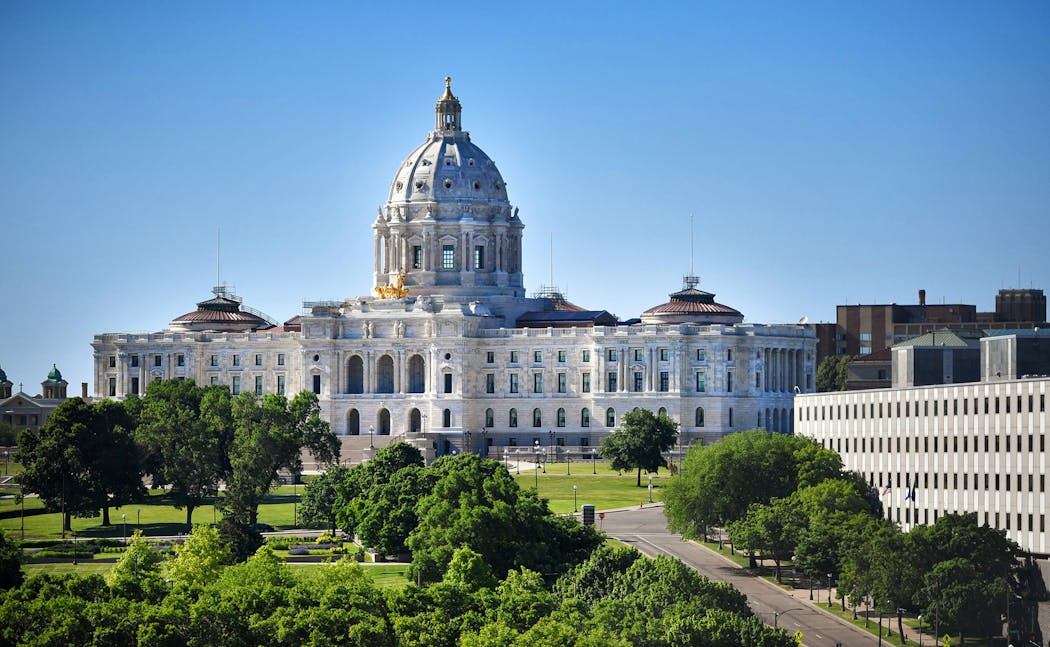
Feb 15, 2024 |
Minnesota schools won $2.2 billion in new funding the last time the Legislature met, but as lawmakers reconvened this week, the 2024 legislative session thus far carries little hope of a splashy education encore.
Restraint instead is the message, and it’s been heard by education advocates, who nonetheless plan to continue to push for additional revenue as district budgets are squeezed.
“We educate the children and we won’t quiet our voices,” said St. Paul Public Schools Superintendent Joe Gothard, who serves as board president of the Minnesota Association of School Administrators.
The voices are welcome, and the needs will be heard, but much of the help to be offered may have to wait until next year, said state Rep. Cheryl Youakim, DFL-Hopkins, who chairs the House Education Finance Committee.
Gothard and others, while thankful for a boost in per-pupil aid and funds to help cover special education and English-language learner costs, say the new money did not make up for years of underfunding and, in many cases, left districts like St. Paul still having to dip into rainy-day funds to balance 2023-24 budgets.
They would like an additional 2% on the basic per-pupil aid formula — the funding stream they deem most flexible and that is used to pay staff salaries, transportation and other general operations. The cost: $160 million, according to the Minnesota School Boards Association.
“We understand that’s probably going to be an uphill battle,” Scott Croonquist, executive director of the Association of Metropolitan School Districts (AMSD), said Monday.
Looming over this year’s legislative funding requests is a potential shortfall in the state’s next two-year budget. That forecast, which was released in November, is to be updated at the end of February, giving hope to some groups — early-education and child-care advocates among them — that prospects may brighten and new investments still might be possible.
But the consistent message from lawmakers has been: “There’s no money,” said Matt Shaver, policy director for the education advocacy group EdAllies.
For that reason, he touted last week the potential value of a modest $1 million increase in a fund that pays prospective educators to student teach. Most are not paid during those 12-week programs — a significant barrier to people who are looking to change careers or come from diverse backgrounds.
“We don’t have enough teachers of color in the pipeline,” Shaver said.
Pushing for more
On Wednesday, the House Education Finance Committee heard about the launch of a program to bolster the ranks of special education teachers — work made possible by last year’s sweeping education bill. On Thursday, the panel is expected to be updated on the new universal free meals program and the Read Act, which is changing the way children learn to read.
Bob Indihar, executive director of the Minnesota Rural Education Association, said that the Read Act, and its requirements to train teachers in the new instructional methods, has been a major point of discussion during the past year, and will need some fine-tuning this session.
“We’re looking at how it can get paid for long term, how to fulfill timelines and finding time to train the personnel,” he said via email Monday.
On Wednesday, Youakim singled out the Read Act as a potential beneficiary of one-time funding.
Croonquist said AMSD is pursuing permanent funding for a new program allowing hourly workers to tap into unemployment insurance during the summer. It has been credited with helping districts retain bus drivers and other employees, but is limited to one-time funding through 2025. Last summer, districts paid out about $40.5 million in benefits, leaving about $95 million to spend this year and next.
The 2023 session provided a major lift to early childhood advocates by enabling more low-income families to access quality child care or preschool programs. Early learning scholarships that for years stood at $70 million were raised to about $196 million a year in 2023-24 and 2024-25.
Efforts ensued to expand the scholarships to middle-income families this session at a potential cost of about $500 million. Then came the November budget forecast.
Ericca Maas, director of policy and advocacy for Think Small, which administers the scholarships in Hennepin and Ramsey counties, said this week the group will continue to promote a middle-income expansion, even with legislators preaching austerity.
“That tension is how the system works,” she said.
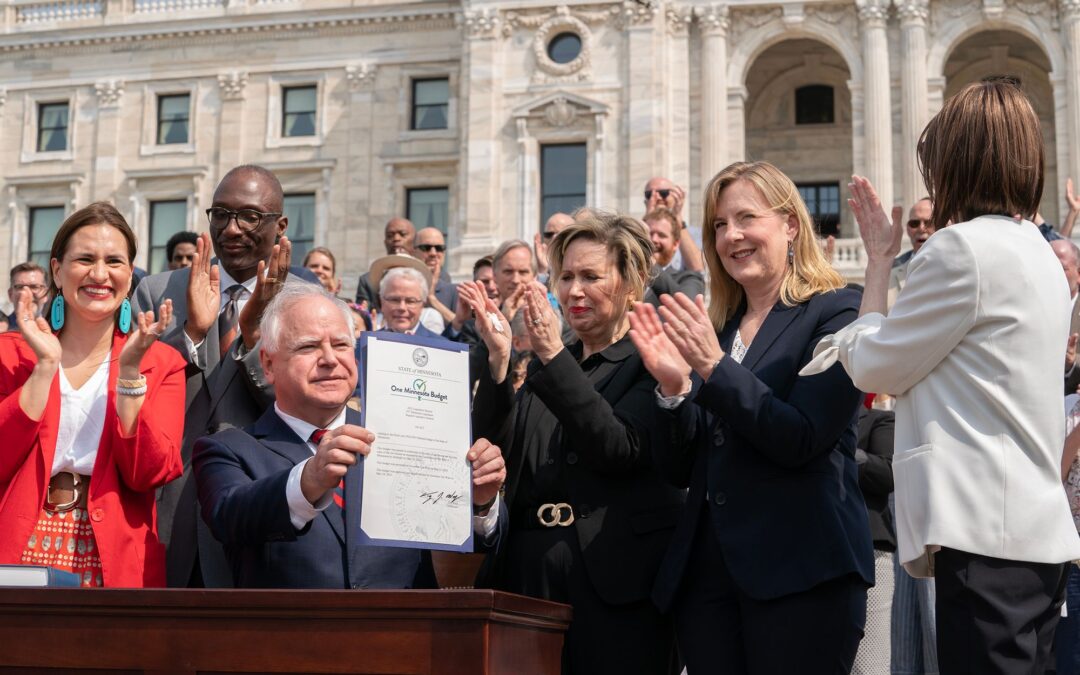
Jun 6, 2023 |
Four legislators gave me sometimes surprising responses when I asked them what laws approved this year would have the most positive impact on young people. Their answers offer helpful insights about how students and adults can have an influence on the Legislature.
Sen. Steve Cwodzinski, DFL-Eden Prairie, offered examples of immediately impactful legislation that students helped pass. He praised three high school students who approached him several years ago, describing the embarrassment some high school students have when they don’t have menstrual products in schools. “It took three years, but this year the bill passed,” he said. As of Jan. 1, 2024, all Minnesota public schools must provide free access to menstrual products for menstruating students grades 4-12. The Legislature allocated several million dollars to support this. Here’s a link to a Minnesota House hearing on this issue in which students from Hopkins and Eagan testified: https://www.house.mn.gov/sessiondaily/Story/17529.
Cwodzinski also cited new high school graduation requirements. Beginning with next year’s ninth graders, all students must pass a civics and a personal finance class before graduating. He thinks these classes can provide vital information and hopes these courses will feature “hands-on” active, project and service-learning opportunities.
Rep. Laurie Pryor, DFL-Minnetonka, chairs the Minnesota House K-12 Education Policy Committee. She’s very pleased that “we listened to experts who can help us turn the corner on where we stand with literacy. Millions of dollars were allocated for curriculum development and training on research-based approaches to teaching reading.” Pryor emphasized that the state will “track progress to measure the impact of this funding.” She also cited support for early childhood programs in public schools and expansion of early childhood programs beginning in July 2025.
Rep. Cheryl Youakim, DFL-Hopkins, chairs the House K-12 Education Finance Committee. She told me: “We’ve been talking about two things for 20 years. We finally did them. Specifically, we indexed education funding to inflation, and we significantly increased support for districts and charters to provide services for students with special needs.” She believes these two actions will help educators more effectively serve students throughout the state.
Here’s one other valuable idea that the Minnesota Legislature approved, which I’m mentioning because of an upcoming application deadline. Earlier in the spring, I wrote about legislative efforts to expand the number of Minnesota students learning construction skills as they built homes for families with low incomes and/or experiencing homelessness. Legislators heard from participating young people that these programs were immensely useful and gratifying. Educators across the state wrote legislators that they want to create more similar, opportunities.
So legislators passed two different laws to help more students participate in construction for low-income family homes.
The first involves more money for YouthBuild (see https://tinyurl.com/55rw85yk). Rep. Matt Norris, DFL-Blaine, was chief author in the Minnesota House. He told me that he is “delighted that legislators recognize these programs are ‘a triple win’ – for the students who gain these skills, for the low-income families who will get high quality permanent housing, and for the state’s economy as a whole, with more well trained workers.”
The Minnesota Department of Economic Development plans to issue $600,000 for YouthBuild programs, with the largest grant available being $150,000. The application deadline is June 30. More information is available here: https://tinyurl.com/ta5fmz75.
I’ll share more information this summer about a second legislatively funded opportunity in this area.
These are outstanding examples of laws that will have a positive impact. It’s also good to see legislators willing to work, sometimes over several years, with educators, families and students to help improve and expand learning in Minnesota.
Joe Nathan, Ph.D., formerly a Minnesota public school educator and PTA president, directs the Center for School Change. Reactions welcome: joe@centerforschoolchange.org or @JoeNathan9249 on Twitter.
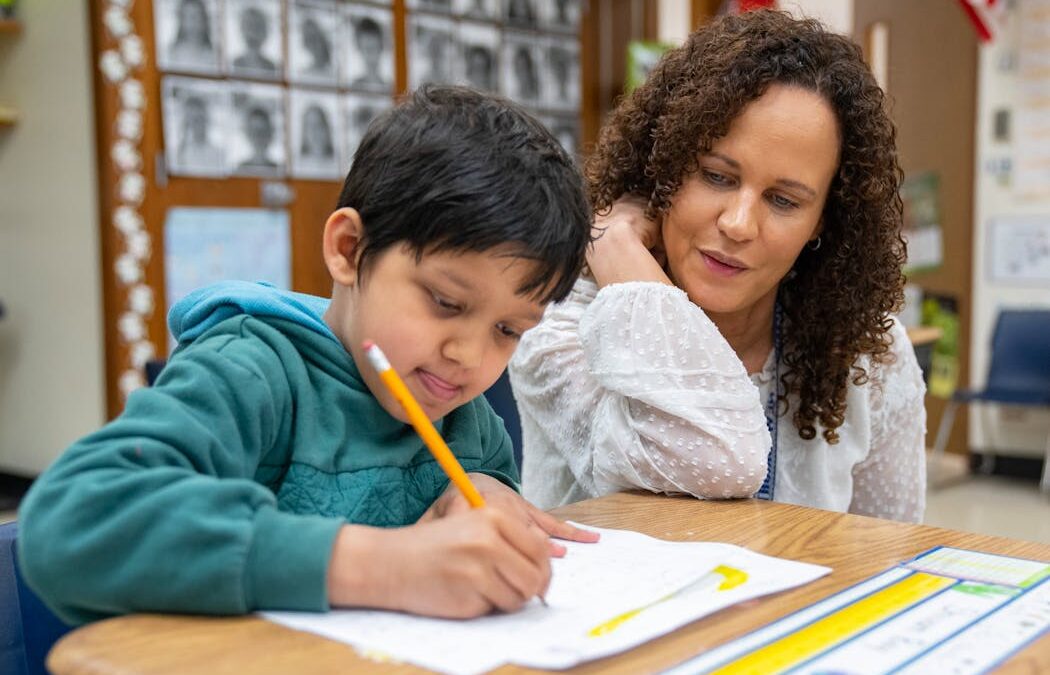
May 18, 2023 |
More than $2 billion in new spending. Updated graduation requirements. Mandates on how schools teach children to read.
The Legislature has sent a sweeping education bill to Gov. Tim Walz that partially delivers on a raft of promises DFLers made on the campaign trail as they sought to take control of state government.
Ahead of the House vote Tuesday, the chair of the Education Finance Committee, Cheryl Youakim, DFL-Hopkins, said that the legislation will “ensure that the learning environments in our schools serve all of our students and that our teachers, principals and administrators have the tools to meet our students where they’re at.”
Republicans lauded provisions requiring high schoolers to pass a civics class to graduate and revamping the way children learn to read. But they also took issue with the legislation, arguing that despite a record funding boost, the cash has too many strings attached.
“This bill puts mandates over money. It puts mandates over students and it takes away local control,” Rep. Jeff Backer, R-Browns Valley, said during the House debate. The House passed the bill on a party-line vote, while one Republican joined Senate Democrats in passing the bill around 5 a.m. Wednesday.
Here are some top provisions in the education bill that will become law when Walz signs it as expected, plus one that already made headlines this year.
Superintendents and school boards have long lamented the growing gap between what it costs to provide state and federally mandated special education and English language services and the funding provided.
Lawmakers this year pledged to cover half the shortfall in special education and about $80 million for English language learner programs over the next two years. All told, Minnesota schools will see $2.2 billion more over the next two years after legislators struck a deal that increases funding by 4% in fiscal year 2024 and a 2% boost the following year with subsequent increases tied to the rate of inflation.
Legislators also set aside $120 million over two years for a new mandate requiring districts to pay unemployment insurance to hourly employees who don’t work during the summer.
“It’s the biggest historic investment in education above base that we’ve ever done,” Youakim said.
Total K-12 education spending — $23.2 billion in the next two years — is nearly a third of the state budget.
Nearly half of Minnesota’s public school students can’t read at the appropriate grade level, according to the latest state testing data. The Read Act, included in the education bill, requires districts to adopt a local literacy plan from among three programs approved by the state Department of Education. Until now, districts were on their own in developing their approach to reading.
The bill provides $35 million for districts to train their teachers in those programs, as well as another $35 million to reimburse schools for materials bought since 2021 that don’t meet the state’s criteria.
The revamp will put a greater emphasis on phonics, vocabulary and phonemic awareness — or how words are made up of a series of sounds — as some curriculum vendors and reading programs that came into fashion in the mid-1990s have come under intense scrutiny.
This centralized approach marks a shift for Minnesota, which comes on the heels of at least 31 other states mandating schools to adopt “evidence-based” instruction on the topic. Ohio and Oregon lawmakers are considering versions of the legislation Minnesota passed.
Schools will be required to stock bathrooms with pads, tampons and other menstrual products to curb what Rep. Sandra Feist, DFL-New Brighton, calls “period poverty.” She asked lawmakers to earmark $2 per pupil, about $2 million per year, for the measure.
Feist began working on the legislation two years ago when a freshman at Hopkins High School told her about classmates who routinely stayed home when they’re running low on pads and tampons. That student, Elif Ozturk, is now a junior and testified in support of the provision.
“We cannot learn when we are leaking,” Ozturk said.
The Legislature effectively banned Minnesota schools from simulating active shooter situations on their campuses during class, barring officials from conducting those exercises if more than half of the enrolled students are in the building.
Sen. Erin Maye Quade, DFL-Apple Valley, credited that provision in the education bill in part to the demonstrations teen activists mounted last year in the aftermath of the shooting at Robb Elementary in Uvalde, Texas, that killed 19 children and two teachers.
Districts are still required to conduct school lockout drills, but must give families at least 24 hours notice when possible and have teachers host a cooling down conversation afterward. The legislation also requires schools to provide students with one hour of violence prevention training per year. The Minnesota Department of Education must also establish a statewide model for those drills by July 1, 2024.
Minnesota’s high school class of 2028 will need to pass courses in government and citizenship and personal finance before they’re eligible for a diploma. Rep. Hodan Hassan, the Minneapolis Democrat who sponsored the legislation, said only 7% of the state’s high school students choose to take a personal finance class. Rep. Dean Urdahl, R-Grove City, lamented to a House education panel that more Americans between the ages of 18 and 34 can name a judge on “American Idol” than name either of the state’s U.S. senators.
“We’ve been in a civic slide to failure for 50 years,” he said.
The education bill also requires school districts to develop an ethnic studies curriculum and allow students to take a course on the topic to satisfy their social studies requirement.
Democrats pushed through as a standalone education bill a measure Rep. Sydney Jordan, DFL-Minneapolis, has been working on for the last four years. Starting this fall, every student enrolled in a Minnesota school that participates in the national School Breakfast Program will receive free breakfast and lunch.
Parents previously had to prove eligibility by filling out an income form. And this school year, the state began automatically enrolling students whose families qualified for Medicaid.
“This just makes sense,” Walz said during a signing ceremony at Webster Elementary in northeast Minneapolis. “This is the assurance that no one falls through the cracks because a busy parent didn’t fill out a form.”
The estimated cost of the free school meals program is about $200 million a year.
Staff writer Ryan Faircloth contributed to this report.
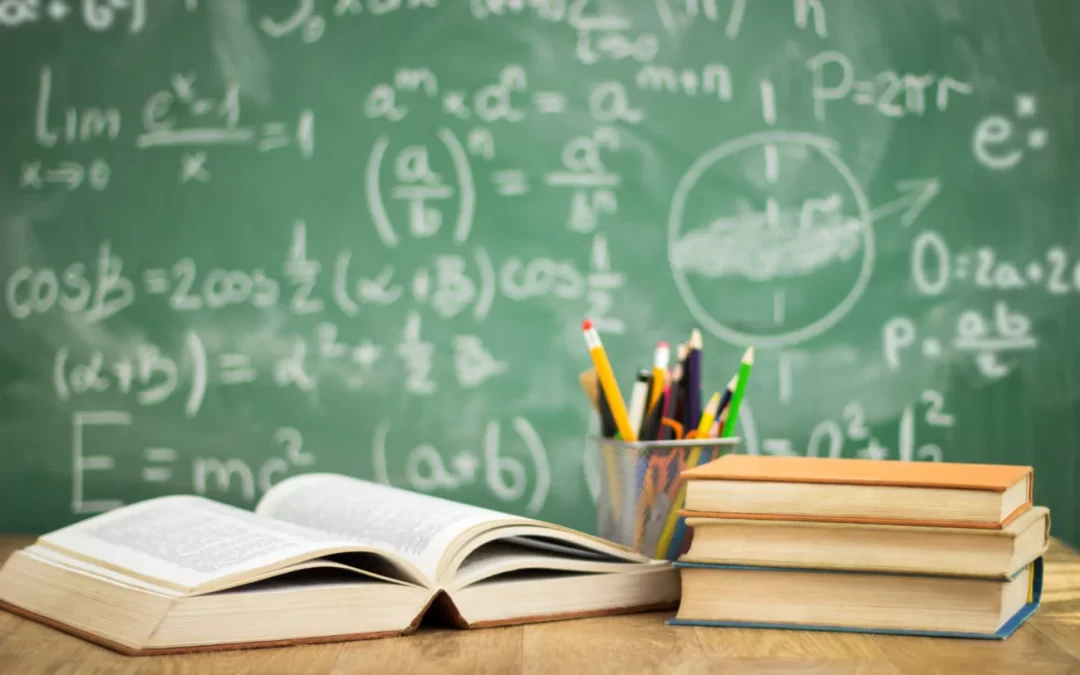
May 18, 2023 |
Minnesota schools will see a surge in state funding, along with new course requirements, teacher diversity grants and changes to reading instruction, under legislation that will become law with Gov. Tim Walz’s signature.
The compromise education budget that passed the House on Tuesday and the Senate early Wednesday morning will increase school funding by $2.26 billion, or 10.8 percent over the current biennium.
Much of that comes through 4 percent and 2 percent increases to the per-student state aid formula and extra money to close the gap between revenue and spending on students with disabilities and those learning English.
Schools also won ongoing increases to the per-student formula with a new provision that will tie future funding hikes to inflation, subject to a 2 percent floor and 3 percent ceiling.
“This is going to provide funding stability for Minnesota schools,” education finance committee chair Sen. Mary Kunesh, DFL-New Brighton, said before dawn Wednesday, as her party worked around a conflict in one lawmaker’s schedule in order to get the bill passed on a 35-32 vote.
Republican opposition
All but one Republican in the House and Senate voted against the bill as members complained of new mandates for schools that will consume some of their new funding.
Those include the removal of statutory language that has made hourly school workers ineligible for unemployment benefits during the summer; although lawmakers set aside $135 million to cover those new payments, that left less money for other education priorities.
Sen. Andrew Mathews, R-Princeton, was among the Republicans voting to send the bill back to the conference committee that found a compromise between the House and Senate education plans.
“This bill has come back with less money per pupil and more mandates,” he said.
Sen. Zach Duckworth, R-Lakeville, was among those complaining of a provision that will make it harder for certain teachers to get a permanent license, saying it would hurt efforts to increase teacher diversity.
Money for mandates
However, the bill does include some $50 million for recruiting and retaining teachers of color, said Rep. Cheryl Youakim, DFL-Hopkins, House education finance chair.
Kunesh dismissed the notion that the bill’s unfunded mandates will harm schools.
“This is an increase like we have never seen before,” with $2.26 billion in new money in the next biennium and another $3.2 billion in the two years that follow, she said. Given all that money, “I don’t believe there are any unfunded mandates in this bill.”
Education Minnesota President Denise Specht said the bill “contains funding and policy that will be life-changing for students and educators — if the money is spent correctly at the district level.”
Funding details
Specific provisions in the bill include:
- $663 million to reduce the gap between special-education revenues and spending. State aid for that purpose would grow from 6.4 percent of each district’s special-education cross-subsidy today to 44 percent next biennium and 50 percent in fiscal year 2027.
- $87 million in the next biennium and $171 million after that to close the English learner cross-subsidy as per-student aid grows from $704 to $1,775.
- $75 million to improve reading instruction, mainly through teacher training and new instructional materials.
- $64 million for school support personnel, such as nurses, counselors, social workers and psychologists, and double that amount in future bienniums.
- $45 million in dedicated funding for school libraries, which is a first for the state.
- $30 million to prepare more special-education teachers, where a shortage has left schools using hundreds of teachers whose licenses don’t comply with federal disabilities laws.
- Continued funding for 4,000 preschool seats that were due to expire, plus an additional 3,000 seats in fiscal year 2025 and 2,200 more the following biennium.
Policy changes
Schools also must contend with a flurry of policy changes in the new legislation, including:
- Students entering high school in 2024 and later will have to pass classes in civics and personal finance in order to graduate.
- School districts must begin offering courses in ethnic studies by 2026, first in high schools, and a year later in elementary and middle schools.
- Schools are not to use exclusionary discipline unless the student presents an immediate danger or the school already has tried an alternative.
- Schools can’t use American Indian symbols or names as mascots without permission from the state’s 11 tribal nations.
- In a welcome policy change for districts, school boards will be allowed to renew their existing operating referenda – which increase property taxes to boost local school funding – one time without going to voters.

May 16, 2023 |
Updated: May 17, 7:34 a.m. | Posted: May 16, 5:50 p.m.
The Minnesota House passed an education spending and policy bill Tuesday — followed by the Senate on Wednesday morning — that puts more than $2.2 billion in new spending toward K-12 education over the next two years, but opponents said it also includes new mandates that many schools will have difficulty carrying out.
The bill increases the per-pupil funding formula by 4 percent in 2024 and 2 percent in 2025 with increases tied to inflation at a maximum of 3 percent in following years. That will bring the formula up to $7,281 per pupil by 2025, as compared to the $6,863 per pupil the state currently spends.
It increases the amount the state contributes to the general education formula, adds new money for libraries, school support staff, menstrual products in school restrooms, changes to reading instruction, an ethnic studies requirement and full-service community schools, bringing the total spent on K-12 up to $23 billion.
The House passed it Tuesday by a 70 to 62 vote along party lines. The Senate passed it Wednesday morning 35-32.
“With this proposal we make historic investments in our schools. We ensure that the learning environments in our communities work for all of our students and that our teachers, principals and administrators have the tools they need to meet students where they’re at,” said Rep. Cheryl Youakim, DFL-Hopkins, who chairs the House Education Finance Committee.
The bill seeks to address shortages schools face when it comes to funding special education and English language learning programming — also known as cross-subsidies.
Schools are required to run these programs for their students, but the state only pays for 6.4 percent of special education costs and 28 percent of English learner costs. Under the bill, the state will increase payments to cover 44 percent of special education costs by 2024 and 50 percent of costs in 2027. English learner funding will increase to cover 87 percent of costs as compared to the 28 percent currently paid for.
Addressing the cross-subsidy and tying funding to inflation is something Minnesota school districts have been advocating for for years. But Scott Croonquist, who is executive director of the Association of Metropolitan School Districts, worries that the bill doesn’t go far enough to address districts’ concerns.
“School leaders greatly appreciate the significant investments — especially addressing the major shortfalls in the special education and English learner programs and linking the formula to inflation,” Croonquist said. “At the same time, the bill includes numerous new mandates and the formula increase falls short of the historic inflationary costs our school districts are facing.”
Rep. Patricia Mueller, R-Austin, worried the bill set too many requirements for schools without sufficiently funding them.
“More money means more control. It means more mandates. The bill that you have in front of you has at least 65 mandates that will be put on our schools,” Mueller said.
The bill includes new spending on libraries — $8 million over a biennium for regional libraries and $45 million for school libraries.
There is also over $100 million put aside to help schools hire and pay for more support staff — school nurses, counselors, mental health workers and other personnel. And $15 million goes to support full service community schools, with priority going to schools that already receive state grants or schools identified as “low performing” by federal standards outlined in the Every Student Succeeds Act.
Lawmakers wrestled over a provision that would require schools to pay hourly workers unemployment for the months they aren’t in school — most commonly over the summer. Districts raised concerns about the cost to schools, as well as worries that the change would make it difficult for them to staff summer programs.
Tony Taschner is the communications director for Apple Valley-Rosemount — the third largest school district in Minnesota.
“We’re going to be paying people not to work when we’ve got opportunities to work … that’s not helpful in terms of schools being able to staff the best they can. There’s work during the summer,” Taschner said. “Some of the four percent and two percent on the formula that might to be coming to districts is going to be eaten up by unfunded increase in unemployment.”
In an effort to address concerns, lawmakers set aside $135 million as a one-time appropriation that could be used to reimburse districts paying unemployment with promises to analyze the cost and make adjustments in the future.
Some of the new spending — $74.6 million — will go to the so-called READ Act, which is meant to change the way reading is taught
in Minnesota elementary schools. The money will pay for new curriculum, teacher training and two Minnesota Department of Education literacy specialist positions.
Another $3.5 million will go toward funding the cost of supplying schools with menstrual products in restrooms and naloxone — an anti-overdose drug. And $6 million will be spent on ethnic studies grants meant to improve school access to ethnic studies curricula as well as helping schools retain racially and ethnically diverse staff — measures that accompany a requirement that schools begin offering ethnic studies courses by the 2027-2028 school year.
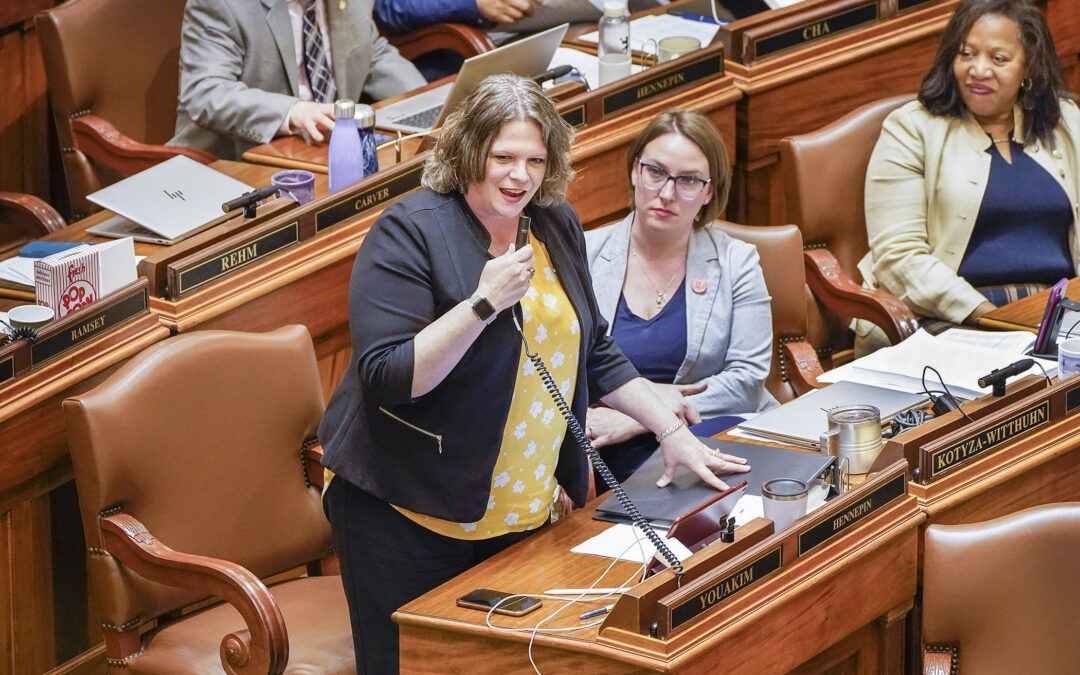
May 16, 2023 |
The education finance and policy agreement returned from conference committee has House DFLers ecstatic.
“With this proposal, we make historic investments in our schools,” said Rep. Cheryl Youakim (DFL-Hopkins). “We’ve had over 20 years of underinvestment in our schools. And while we cannot change that overnight, or even in one biennium, this bill is an awesome start.”
Youakim and Sen. Mary Kunesh (DFL-New Brighton) sponsor HF2497 that calls for $23.2 billion in K-12 education spending next biennium, an increase of $2.26 billion, or 10.2% over base.
House conferees won the fight on many of their top funding priorities. Most remarkably, the basic funding formula — the main mechanism through which the state funds K-12 education — would be indexed to inflation starting in fiscal year 2026. The bill’s language details certain parameters that would limit the annual increase to between 2% and 3%, with Youakim touting this budgetary feat.
Prior to this automatic increase kicking in, the funding formula would be raised by 4% in fiscal year 2024 and 2% in fiscal year 2025 at a cost of $705 million.
Sitting at a mere 6.43% in recent years, special education cross-subsidy aid is due to skyrocket. Districts could expect to have 44% of this annual shortfall covered through fiscal year 2026, then ramp up to 50% starting with fiscal year 2027. The cost in the upcoming biennium would total $663 million.
Plans to extend unemployment insurance to hourly school workers are in the conference committee report as well, with the bill committing $135 million to reimburse districts for this new expense.
A huge bite is due be taken out of the English Learner cross-subsidy, as the bill would earmark $87 million next biennium in this funding area; $81.7 million would go toward pre-Kindergarten education, preserving 4,000 pre-K seats in danger of disappearing and establishing an additional 5,200 seats in fiscal year 2025; and a statewide overhaul of literacy education is set to net $75 million.
Other notable appropriations would include:
- $74.4 million for student support personnel aid and workforce development, to attend to students’ mental, behavioral, and physical health needs
- $45.2 million for school library aid
- $37 million for Grow Your Own teacher grants, designed to increase the size and diversity of the teaching workforce
- $30 million to establish a special education teacher pipeline
- $24.3 million for building safety and cybersecurity grants
- $15 million for full-service community school grants
- $9.9 million to cover 35% of the transportation sparsity aid cross-subsidy, up from the current rate of 18.2%
- $2 million to kickstart construction of gender-neutral bathrooms.
The bill also calls for a plethora of policy changes, especially in regard to measures long sought by American Indian educational advocates, such as:
- prohibiting schools from using Indian symbols or names as mascots, unless all 11 of the state’s tribal nations sign off on an exemption request
- replacing Columbus Day with Indigenous Peoples’ Day on the school calendar
- adding Indigenous education to the state’s academic standards during the next 10-year review.
Additional changes are also primed for the classroom.
Civics and personal finance courses would be required for high school graduation, effective with students beginning ninth grade in the 2024-25 school year. Holocaust and genocide studies would be embedded in the social studies curriculum beginning with the 2026-27 school year, while a directive for schools to offer ethnic studies courses would be phased in throughout the decade.
Moreover, substantial modifications are planned for active shooter drills, a mandate is included for schools to carry menstrual products and opiate antagonists, and all school employees are set to receive full pay and benefits on e-learning days.
Finally, a contentious provision forbidding higher education institutions participating in the postsecondary enrollment option program from requiring faith statements of applicants is in the amended bill, garnering condemnation on the House Floor as a discriminatory attack on religious freedom from several Republican members.
Republicans were sharply critical of many other aspects of the conference committee report, too.
“The bill that you have in front of you has at least 65 mandates that will be put on our schools,” said Rep. Patricia Mueller (R-Austin). “This is a transformational bill. The problem is it doesn’t transform the way we need it to be.”
She took issue with the expanded power of the Department of Education over locally elected school boards, which she believes ought to be in the driver’s seat for setting educational standards and making funding decisions instead.
Other members criticized the expansion of unemployment insurance as fiscally irresponsible and the READ Act as insufficient in addressing the state’s intensifying literacy crisis.







Recent Comments